 W
WJean Améry, born Hanns Chaim Mayer, was an Austria-born essayist whose work was often informed by his experiences during World War II. His most celebrated work, At the Mind's Limits: Contemplations by a Survivor on Auschwitz and Its Realities (1966), suggests that torture was "the essence" of the Third Reich. Other notable works included On Aging (1968) and On Suicide: A Discourse on Voluntary Death (1976). He first adopted the pseudonym Jean Améry in 1955. Améry took his own life in 1978.
 W
WArrows in the Dark: David Ben-Gurion, the Yishuv Leadership and Rescue Attempts during the Holocaust is a book by Israeli historian Tuvia Friling dealing with the attitude toward the Holocaust of the leadership of the Yishuv, the Jewish community in Palestine that existed before the establishment of the State of Israel in May 1948. The book examines the leadership's attempts to rescue European Jews who were under threat, and the controversy that surrounds those efforts. The Hebrew edition of the book was published in 1998 and the English version in 2005.
 W
WThe issue of why the Allies did not act on early reports of atrocities in the Auschwitz concentration camp by destroying it or its railways by air during World War II has been a subject of controversy since the late 1970s. Brought to public attention by a 1978 article from historian David Wyman, it has been descried by Michael Berenbaum as "a moral question emblematic of the Allied response to the plight of the Jews during the Holocaust", and whether or not the Allies had the requisite knowledge and the technical capability to act continues to be explored by historians.
 W
WThe Victim Theory, encapsulated in the slogan "Austria – the Nazis' first victim", was the ideological basis for Austria under allied occupation (1945–1955) and in the Second Austrian Republic until the 1980s. According to the founders of the Second Austrian Republic, the 1938 Anschluss was an act of military aggression by the Third Reich. Austrian statehood had been interrupted and therefore the newly revived Austria of 1945 could not and should not be considered responsible for the Nazis' crimes in any way. The "victim theory" which was formed by 1949 insisted that all of the Austrians, including those who strongly supported Hitler, had been unwilling victims of the Nazi regime and were therefore not responsible for its crimes.
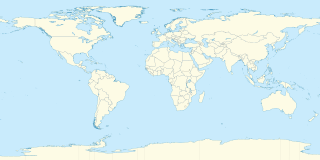 W
WBabi Yar, a ravine near Kyiv, was the scene of possibly the largest shooting massacre during the Holocaust. After the war, commemoration efforts encountered serious difficulty because of the policy of the Soviet Union. After the dissolution of the Soviet Union, a number of memorials have been erected. The events also formed a part of literature.
 W
WThis is a selected bibliography and other resources for The Holocaust, including prominent primary sources, historical studies, notable survivor accounts and autobiographies, as well as other documentation and further hypotheses.
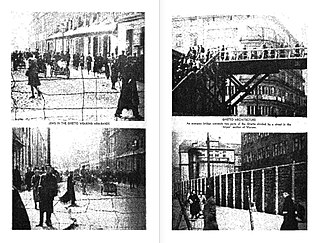 W
WThe Black Book of Polish Jewry is a 400-page report about the progress of the Holocaust in Poland published in 1943 during World War II by the American Federation for Polish Jews in cooperation with the Association of Jewish Refugees and Immigrants from Poland. It was compiled by Jacob Apenszlak with Jacob Kenner, Isaac Lewin and Moses Polakiewicz, and released by Roy Publishers of New York with an introduction by Ignacy Schwarzbart from the National Council of the Polish Republic. The book was sponsored by Eleanor Roosevelt, Albert Einstein, US Senator Robert Wagner, and other high-ranking community leaders. Historian Michael Fleming suggests it downplayed the true scale and manner of the Holocaust in an effort to elicit the empathy of its readership.
 W
WLeonardo de Benedetti was an Italian Jew and physician who was interned in the Auschwitz concentration camp from February 1944 until its liberation in January 1945. After the end of the Second World War he and fellow inmate Primo Levi wrote Auschwitz Report, a factual report of conditions inside the camp.
 W
WThe Final Solution or the Final Solution to the Jewish Question was a Nazi plan for the genocide of Jews during World War II. The "Final Solution to the Jewish question" was the official code name for the murder of all Jews within reach, which was not restricted to the European continent. This policy of deliberate and systematic genocide starting across German-occupied Europe was formulated in procedural and geopolitical terms by Nazi leadership in January 1942 at the Wannsee Conference held near Berlin, and culminated in the Holocaust, which saw the killing of 90% of Polish Jews, and two-thirds of the Jewish population of Europe.
 W
WThe functionalism–intentionalism debate is a historiographical debate about the origins of the Holocaust as well as most aspects of the Third Reich, such as foreign policy. The debate on the origins of the Holocaust centres on essentially two questions:Was there a master plan on the part of Adolf Hitler to launch the Holocaust? Intentionalists argue there was such a plan, while functionalists argue there was not. Did the initiative for the Holocaust come from above with orders from Adolf Hitler or from below within the ranks of the German bureaucracy? Although neither side disputes the reality of the Holocaust, nor is there serious dispute over the premise that Hitler was personally responsible for encouraging the anti-Semitism that allowed the Holocaust to take place, intentionalists argue the initiative came from above, while functionalists contend it came from lower ranks within the bureaucracy.
 W
WYonassan Gershom is a Rabbi and writer who was ordained in the Jewish Renewal movement during the 1980s, and is now a follower of Breslov Hasidism. He was associated with the early days of the B'nai Or movement, a forerunner of Jewish Renewal, in which he was ordained by Rabbi Zalman Schachter-Shalomi in 1986, although he is not in agreement with the direction that the movement has taken in more recent years.
 W
WMuriel Nezhnie Helfman, known professionally as Nezhnie, was an American artist, primarily weaving large tapestries throughout 1956–1992. She gained international attention in the late 1980s with a series of six tapestries, Images of the Holocaust, completed between 1979 and 1989. They were first exhibited as a series at the "Sazama-Brauer Gallery" in Chicago in 1988. Their imagery and texts are based on historical photographs of victims of Nazi persecution, such as ones by Mendel Grossman, and other materials that Nezhnie collected from the Library of Congress, National Archives, the Pentagon and the Yad Vashem Archives in Israel.
 W
WEdgar Hilsenrath was a German-Jewish writer and Holocaust survivor. He wrote several fictional novels that gave an unvarnished view of the Holocaust which were partly based on his own experiences in a Nazi concentration camp. His main works are Night, The Nazi and the Barber, and The Story of the Last Thought. After fleeing Nazi Germany in 1944, he lived in Palestine and France, before settling in New York City in 1951 where he lived for 24 years and published his first novels. Although he was a naturalized United States citizen, he chose to return to Germany in 1975 where he lived until his death in 2018.
 W
WThe program of the Polish Law and Justice party has chapters on "identity" ("tożsamość") and "historical policy". The implementation of the historical policy of Law and Justice consists in promoting both inside Poland and internationally a version of history based on Polish nationalism that focuses on protecting the "good name" of the Polish nation. For the party, the "Polish nation" is defined in terms of ethnicity, rather than civic participation. In opinion of critics, this policy produces a narrative that Poles were victims and heroes during World War II and the Communist era, and Poles were the victims of crimes comparable to the Holocaust against Jews. Discussions of any events that do not fit this narrative are labelled as the "pedagogy of disgrace", which, according to the party, should be replaced with the "pedagogy of pride" which focuses on positive aspects of Polish history. The party's historical policy has divided historians, with some working together with PiS on establishing a historical policy, seeing it as important part of building common positive identity and historical truth and justice, while others accuse it of politicizing history and distorting historical facts.
 W
WThe Holocaust Industry: Reflections on the Exploitation of Jewish Suffering is a 2000 book by Norman Finkelstein, in which the author argues that the American Jewish establishment exploits the memory of the Nazi Holocaust for political and financial gain, as well as to further the interests of Israel. According to Finkelstein, this "Holocaust industry" has corrupted Jewish culture and the authentic memory of the Holocaust.
 W
WHolocaust inversion is a phrase which is used to describe the portrayal of Jews as Nazis, crypto-Nazis, Nazi sympathizers, Holocaust perpetrators, or Holocaust "copycats." Whether this discourse is antisemitic when it is related to anti-Zionism is disputed.
 W
WIn the decades since the Holocaust, some national governments, international bodies and world leaders have been criticized for their failure to take appropriate action to save the millions of European Jews, Roma, and other victims of the Holocaust. Critics say that such intervention, particularly by the Allied governments, might have saved substantial numbers of people and could have been accomplished without the diversion of significant resources from the war effort.
 W
WMiklos Samual Kanitz (1939–2006) was a Hungarian-Canadian Holocaust survivor living in Saskatoon, Saskatchewan. He narrowly escaped being transported to the German death camp at Auschwitz in June 1944 at the age of six, because a neighbor, whose son was a member of the Hungarian fascist Arrow Cross Party, risked her life to hide Kanitz, his mother, and his brother in her potato cellar for seven months until the end of the war.
 W
WThe Memorial for Victims of the German Occupation is a monument created in memory of the German invasion of Hungary, located in Budapest's Liberty Square. The memorial has sparked controversy and angered Jewish community organizations, with critics alleging that the monument absolves the Hungarian state and Hungarians of their collaboration with Nazi Germany and complicity in the Holocaust.
 W
WThe Mizoch (Mizocz) Ghetto was a World War II ghetto set up in the town of Mizoch, Western Ukraine by Nazi Germany for the forcible segregation and mistreatment of Jews.
 W
WThe Nisko Plan was an operation to deport Jews to the Lublin District of the General Governorate of occupied Poland in 1939. Organized by Nazi Germany, the plan was cancelled in early 1940.
 W
WWhen applied to the concentration camps and extermination camps established by Nazi Germany in German-occupied Poland, the terms "Polish death camp" and "Polish concentration camp" have been widely characterized as misnomers. These phrases have been occasionally used by politicians and news media in reference to the camps' geographic location in German-occupied Poland. However, Polish officials and organizations have objected to such terms as misleading, as they can be misconstrued as meaning "death camps set up by Poles" or "run by Poland". Some Polish politicians have portrayed inadvertent uses of the expression by foreigners as a deliberate disinformation campaign.
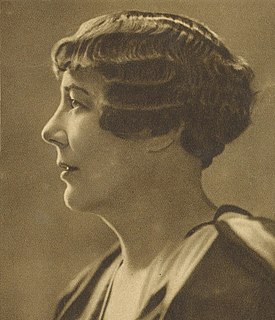 W
WProtest! was a clandestine leaflet issued in 1942 as a protest by Polish Catholics against the mass murder of Jews in German-occupied Poland.
 W
WRaczyński's Note, dated December 10, 1942, and signed by Minister of Foreign Affairs Edward Raczyński, was the official diplomatic note from the government of Poland in exile regarding the extermination of the Jews in German-occupied Poland. Sent to the foreign ministers of the Allies, it was the first official report on the Holocaust to inform the Western public about these crimes. It identified Treblinka, Bełżec and Sobibór by name as extermination camps. It was also the first official speech of one of the governments of Nazi-occupied Europe in defense of all Jews persecuted by Germany – not only citizens of their country.
 W
WThe Reich Chancellery meeting of 12 December 1941 was an encounter between Adolf Hitler and the highest-ranking officials of the Nazi Party. Almost all important party leaders were present to hear Hitler declare the ongoing destruction of the Jewish race, yet it remains less known than the later Wannsee Conference.
 W
WArnold E. Samuelson (1917-2002) was a combat photographer during World War II who was among the first Allied photographers to document Nazi war crimes.
 W
WThe Black Book of Poland is a 750-page report published in 1942 by the Ministry of Information of the Polish government-in-exile, describing atrocities committed by Germany in occupied Poland in the 22 months between the invasion of Poland in September 1939, and the end of June 1941.
 W
WThe Mass Extermination of Jews in German Occupied Poland was a brochure published by the Polish government-in-exile on 10 December 1942 and sent to the foreign ministers of the 26 government signatories of the Declaration by United Nations. It was the first official document informing the Western public about the Holocaust in German-occupied Poland.
 W
WThe Polish White Book is a semi-official name of a series of comprehensive reports published during World War II by the Ministry of Information of the Polish government-in-exile in London, England, dealing with Polish-German relations before and after the 1939 German-Soviet aggression against Poland. Each publication, released in English, French, German and Polish between 1940 and 1941, consisted of official documents and affidavits, supplemented with an overview by the Ministry. Notably, the Polish White Book was released in parallel with The Black Book of Poland series by G.P. Putnam's Sons of New York, published in London by Hutchinson & Co under a differing title in 1942.
 W
WVergangenheitsbewältigung is a German term describing processes that since the later 20th century have become key in the study of post-1945 German literature, society, and culture.
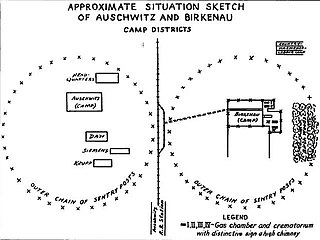 W
WThe Vrba–Wetzler report is one of three documents that comprise what is known as the Auschwitz Protocols, otherwise known as the Auschwitz Report or the Auschwitz notebook. It is a 33-page eye-witness account of the Auschwitz concentration camp in German-occupied Poland during the Holocaust.
 W
WRudolf "Rudi" Vrba was a Slovak-Jewish biochemist who, as a teenager in 1942, was deported to the Auschwitz concentration camp in German-occupied Poland. He became known for having escaped from the camp in April 1944, at the height of the Holocaust, and for having co-written a detailed report about the mass murder that was taking place there. Distribution of the report by George Mantello in Switzerland is credited with having halted the mass deportation of Hungary's Jews to Auschwitz in July 1944, saving more than 200,000 lives. After the war Vrba trained as a biochemist, working mostly in England and Canada.
 W
WThe Wannsee Conference was a meeting of senior government officials of Nazi Germany and Schutzstaffel (SS) leaders, held in the Berlin suburb of Wannsee on 20 January 1942. The purpose of the conference, called by the director of the Reich Main Security Office SS-Obergruppenführer Reinhard Heydrich, was to ensure the co-operation of administrative leaders of various government departments in the implementation of the Final solution to the Jewish question, whereby most of the Jews of German-occupied Europe would be deported to occupied Poland and murdered. Conference participants included representatives from several government ministries, including state secretaries from the Foreign Office, the justice, interior, and state ministries, and representatives from the SS. In the course of the meeting, Heydrich outlined how European Jews would be rounded up and sent to extermination camps in the General Government, where they would be killed.
 W
WWannsee House and the Holocaust by Steven Lehrer tells the story of the elegant suburban Berlin villa where the Wannsee Conference took place on January 20, 1942. At that meeting, Reinhard Heydrich announced the plans for the deportation and extermination of all Jews in German-occupied territory. This to be coordinated with the representatives from the Nazi state agencies present at the meeting.
 W
WElie Wiesel was a Romanian-born American writer, professor, political activist, Nobel laureate, and Holocaust survivor. He authored 57 books, written mostly in French and English, including Night, a work based on his experiences as a Jewish prisoner in the Auschwitz and Buchenwald concentration camps.
 W
WAnnette Wieviorka is a French historian. She is a specialist in the Holocaust and the history of the Jewish people in the 20th century since the 1992 publication of her thesis, Deportation and genocide between memory and forgetting, defended in 1991 at the Paris Nanterre University.
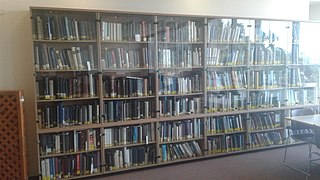 W
WYizkor books are memorial books commemorating a Jewish community destroyed during the Holocaust. The books are published by former residents or landsmanshaft societies as remembrances of homes, people and ways of life lost during World War II. Yizkor books usually focus on a town but may include sections on neighboring smaller communities.